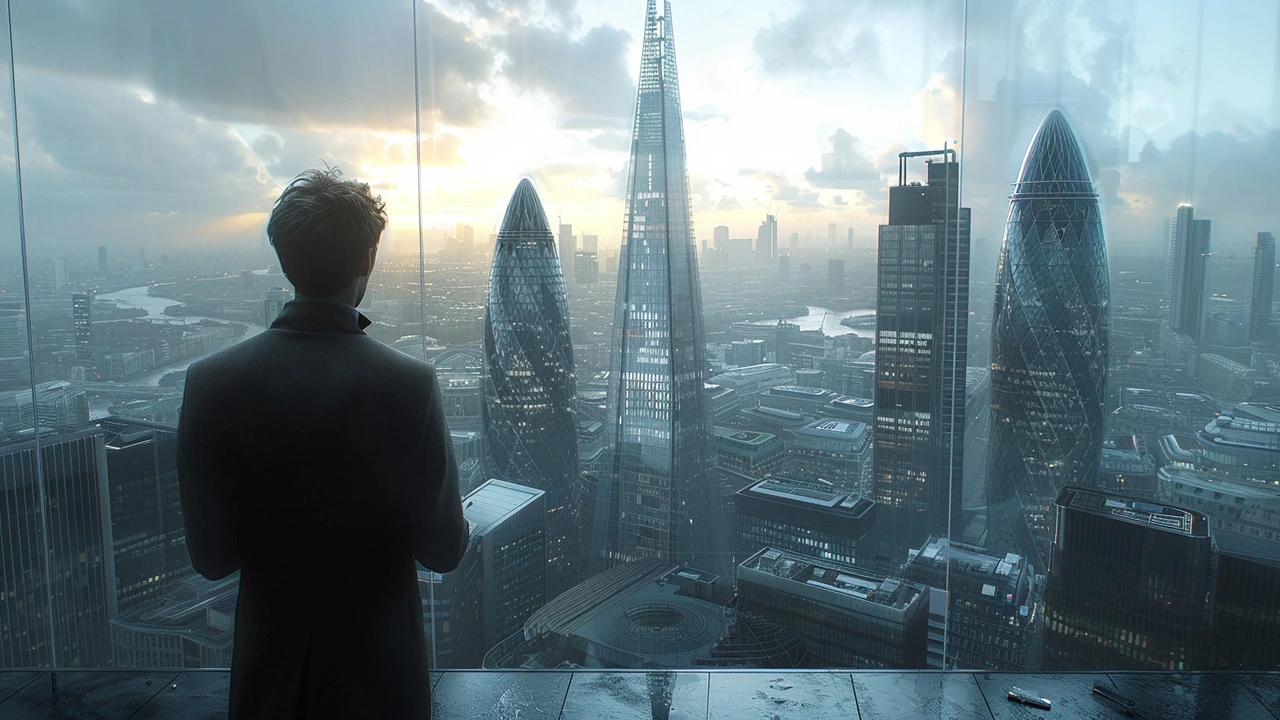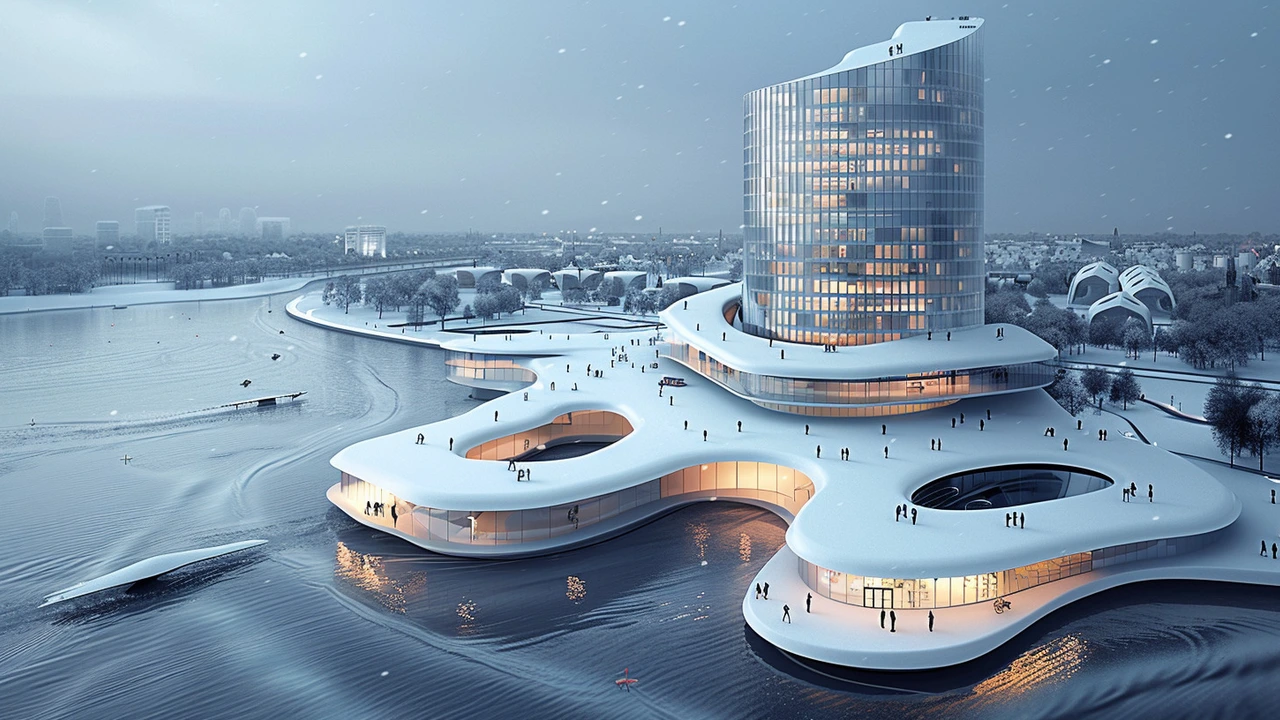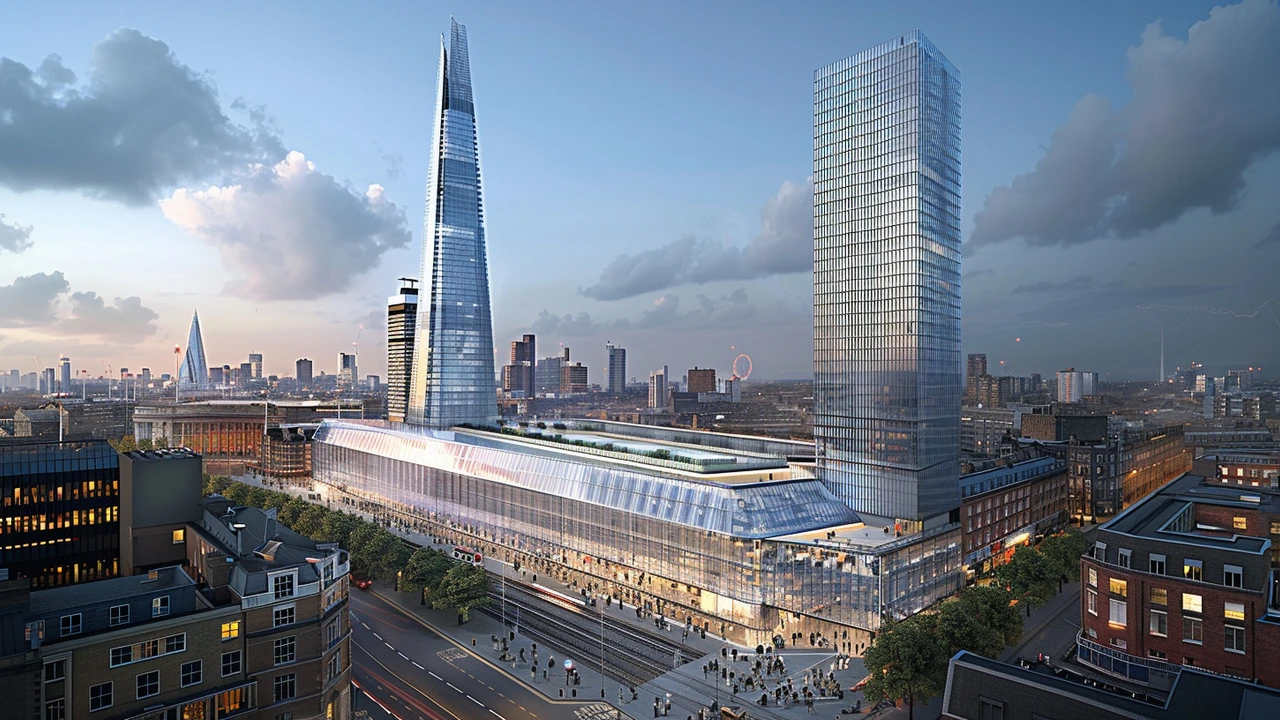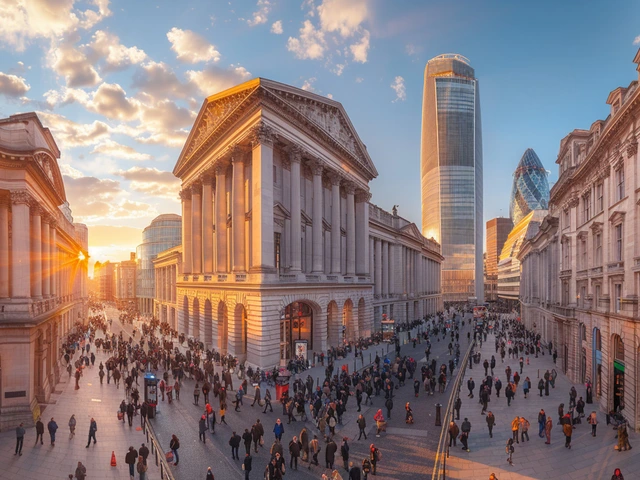Neo-Futurism stands as a radical departure from conventional design, blending technological innovation with artistic expression to create compelling, forward-looking spaces. This style of design, emphasizing function as much as form, has captured the imagination of architects and designers across the globe.
At its core, Neo-Futurism seeks to envision the future through structures that are not only visually stunning but also highly functional. Imagine towering skyscrapers that seem to defy gravity, homes that adapt to their environments, and urban spaces crafted to enhance human interactions and well-being. This movement is more than aesthetics; it's a blueprint for living in tomorrow's world.
- Introduction to Neo-Futurism
- Key Characteristics
- Notable Architects and Projects
- Future Directions and Impact
Introduction to Neo-Futurism
Neo-Futurism, emerging in the late 20th century, is a design philosophy that reflects a profound optimism for the future. This architectural style is characterized by a fusion of high-tech innovation and organic forms, creating structures that are as functional as they are aesthetically pleasing. The movement is often considered a response to previous architectural styles like Postmodernism, aiming to transcend traditional boundaries and create visually striking yet practical designs.
The term 'Neo-Futurism' was popularized by architect and critic Reyner Banham, who used it to describe the forward-thinking designs of architects such as Zaha Hadid and Santiago Calatrava. These architects envisioned buildings not just as structures, but as living entities capable of transforming human experiences. Neo-Futurism is deeply intertwined with technological advances, often incorporating elements like smart materials, adaptive systems, and sustainable technologies into its designs.
One of the most iconic examples of Neo-Futurism is the Heydar Aliyev Center in Baku, Azerbaijan, designed by Zaha Hadid. This structure seamlessly blends fluid forms with functional spaces, creating a dynamic interaction between the building and its environment. The center, with its sweeping curves and flowing lines, captures the essence of Neo-Futurism: a harmonious blend of form, function, and futuristic vision.
“As an architect, you design for the present, with an awareness of the past, for a future which is essentially unknown.” - Norman Foster
What sets Neo-Futurism apart is its commitment to sustainability and environmental consciousness. Architects and designers in this movement prioritize eco-friendly materials and energy-efficient technologies. For instance, many Neo-Futuristic buildings incorporate green roofs, solar panels, and rainwater harvesting systems, contributing to a reduced environmental footprint. These innovations not only enhance the aesthetic appeal but also ensure that the buildings align with the principles of sustainable development.
In urban planning, Neo-Futurism is revolutionizing how cities are designed and experienced. The movement advocates for interconnected, smart cities where technology optimizes everything from traffic flow to energy consumption. Urban spaces are reimagined to foster community interaction, with parks, public art, and pedestrian-friendly zones becoming integral parts of the cityscape. This approach not only enhances the quality of life but also builds a sense of community and belonging.
Neo-Futurism is not confined to architecture alone; it extends to interior design, industrial design, and even art. The common thread is a visionary outlook that embraces change and innovation. Whether it's futuristic furniture, smart home systems, or avant-garde artworks, Neo-Futurism influences various aspects of modern living, making everyday life more efficient and inspiring.

Key Characteristics
Neo-Futurism is a style that consistently captures the imagination by blending technological advances with visionary aesthetics. One of the primary characteristics of Neo-Futurism is its emphasis on sleek, aerodynamic forms. These designs often feature smooth, flowing lines and curves, suggesting movement and progress even when the structures are static.
Materials play a pivotal role in Neo-Futurist design. The use of glass, steel, and innovative composites is prevalent, allowing architects to create transparent and reflective surfaces that interact dynamically with light and the surrounding environment. The buildings often appear as if they belong to the future, with facades that can change color or pattern based on the weather or time of day.
Sustainability is another hallmark of Neo-Futurism. Eco-friendly designs that support energy efficiency, use recyclable materials, and incorporate renewable energy sources are common. The approach revolves around designing not just for the present but with a keen eye toward future challenges. Some buildings incorporate vertical gardens, solar panels, and rainwater harvesting systems seamlessly into their structures.
Neo-Futurism also champions connectivity and interaction. This translates into designs that enhance human experiences within a space. Urban environments, for instance, are crafted to foster community engagement and improve social interactions. Open, flexible spaces that can be reconfigured for various uses are standard. The goal is to create environments where technology and humanity meet harmoniously.
Technology, of course, is at the heart of Neo-Futurism. Smart buildings with integrated digital systems for monitoring energy use, climate control, and security are the norm. These smart systems foster convenience and efficiency, making lives easier while reducing the environmental footprint. As renowned architect Zaha Hadid once stated,
"There are 360 degrees, so why stick to one?"
This quote underscores the limitless possibilities within Neo-Futurism. Modular designs that can be easily adapted or expanded are common, reflecting the movement’s fluid and dynamic nature.
Lastly, Neo-Futurism often integrates art into architecture. Many buildings stand as pieces of art themselves, with sculptural forms and aesthetically bold choices. Public art installations, whether they are interactive displays or digital projections, are frequently part of these spaces, enriching the urban environment and engaging passersby in unexpected ways.

Notable Architects and Projects
Neo-Futurism thrives on the inventive minds of architects who dare to challenge the status quo. One prominent figure in this realm is Zaha Hadid, often dubbed the 'Queen of Curve.' Her designs, such as the Heydar Aliyev Center in Baku, Azerbaijan, break away from traditional forms, embracing fluidity and organic shapes that almost make buildings seem like living, breathing entities. The Heydar Aliyev Center is particularly notable for its seamless, wave-like exterior, which draws visitors into its futuristic embrace.
Another trailblazer in Neo-Futurist architecture is Santiago Calatrava. His innovative vision brought the world the City of Arts and Sciences in Valencia, Spain. This complex combines a sprawling interactive museum with an undersea aquarium and an opera house, all housed within strikingly modern, skeletal structures. Calatrava's work demonstrates how functional spaces can simultaneously push the boundaries of structural engineering.
Norman Foster, the founder of Foster + Partners, also deserves mention in this conversation. His design of the Apple Park in Cupertino, California, is a Neo-Futurist marvel. The campus, often referred to as the 'spaceship' due to its circular design, is a testament to sustainable architecture. The building boasts a zero-emission footprint, powered by renewable energy and seamlessly integrated with the surrounding landscape. This project shows Neo-Futurism’s potential to marry ecological responsibility with advanced design.
One more compelling project is the Gwanggyo Power Centre in South Korea, designed by MVRDV. This multi-use complex stands out with its terraced design and lush greenery, which creates an environment where nature and urbanization coexist harmoniously. Each terrace fosters vegetation, reinforcing the idea that future architectural designs must prioritize ecological balance.
“Good design is all about making other designers feel like idiots because that idea wasn’t theirs.” — Frank Chimero
Finally, the work of Bjarke Ingels and his firm, BIG (Bjarke Ingels Group), cannot be overlooked. The VIA 57 West in New York City is a striking example of his 'courtscraper' concept, blending the traditional courtyard with a skyscraper’s verticality. The structure is both eye-catching and functional, designed to maximize natural light and provide ample green space in an urban setting.
These architects and their groundbreaking projects illustrate the dynamic and evolving nature of Neo-Futurism. Their innovative designs not only redefine aesthetics but also enhance the way we interact with our built environments, pointing towards a future where form, function, and sustainability are harmoniously interwoven.

Future Directions and Impact
As Neo-Futurism continues to evolve, its influence on modern design is becoming more pronounced. The integration of cutting-edge technology and sustainability is steering the architectural world towards ever more ambitious projects. A key direction for the future is the focus on environmentally friendly design. This goes beyond the mere use of green materials. Architects are now creating buildings that generate their own energy, efficiently manage water resources, and utilize natural light to reduce dependency on artificial lighting. These structures not only minimize environmental harm but also promote a healthier lifestyle for their occupants.
Urbanization plays a crucial role in the future of Neo-Futurism. As cities expand, the need for functional, adaptable, and futuristic living and working spaces grows. Mega-cities will increasingly see the emergence of mixed-use structures that combine residential, commercial, and recreational spaces in a seamless, high-tech environment. Concepts like smart cities—where everything from traffic lights to waste management is interconnected and controlled by sophisticated AI systems—are becoming a reality. These smart urban areas will allow for more efficient resource use, contribute to lower pollution levels, and enhance quality of life.
A significant trend within Neo-Futurism is the move towards more organic forms. Modern designers are looking to nature for inspiration, resulting in buildings that mimic natural shapes like the curves of a leaf or the structure of a honeycomb. This biomimicry is not just about aesthetics; it also improves the functionality of these structures. For example, buildings designed with natural airflow patterns in mind can reduce heating and cooling costs, making them more energy-efficient.
Collaboration across different fields will also drive the future of Neo-Futurism. Architects, engineers, technologists, and artists are coming together to create spaces that are not only functional and beautiful but also culturally significant. An example is the Museum of the Future in Dubai, which aims to be a hub for innovation and culture. Incorporating elements of Neo-Futurism, its torus-shaped exterior and dynamic interior spaces exemplify the blending of art and technology.
"We don't just make spaces; we create experiences," says the lead designer of the project, capturing the essence of this forward-looking approach.
Finally, the impact of Neo-Futurism on society cannot be understated. As these innovative designs become more prevalent, they will alter how people interact with their surroundings. Environments that adapt to individual needs, foster community connections, and promote well-being can significantly influence societal norms and behaviors. In an era where issues like mental health and social isolation are increasingly prominent, Neo-Futurism offers a pathway to more inclusive and supportive urban spaces.





